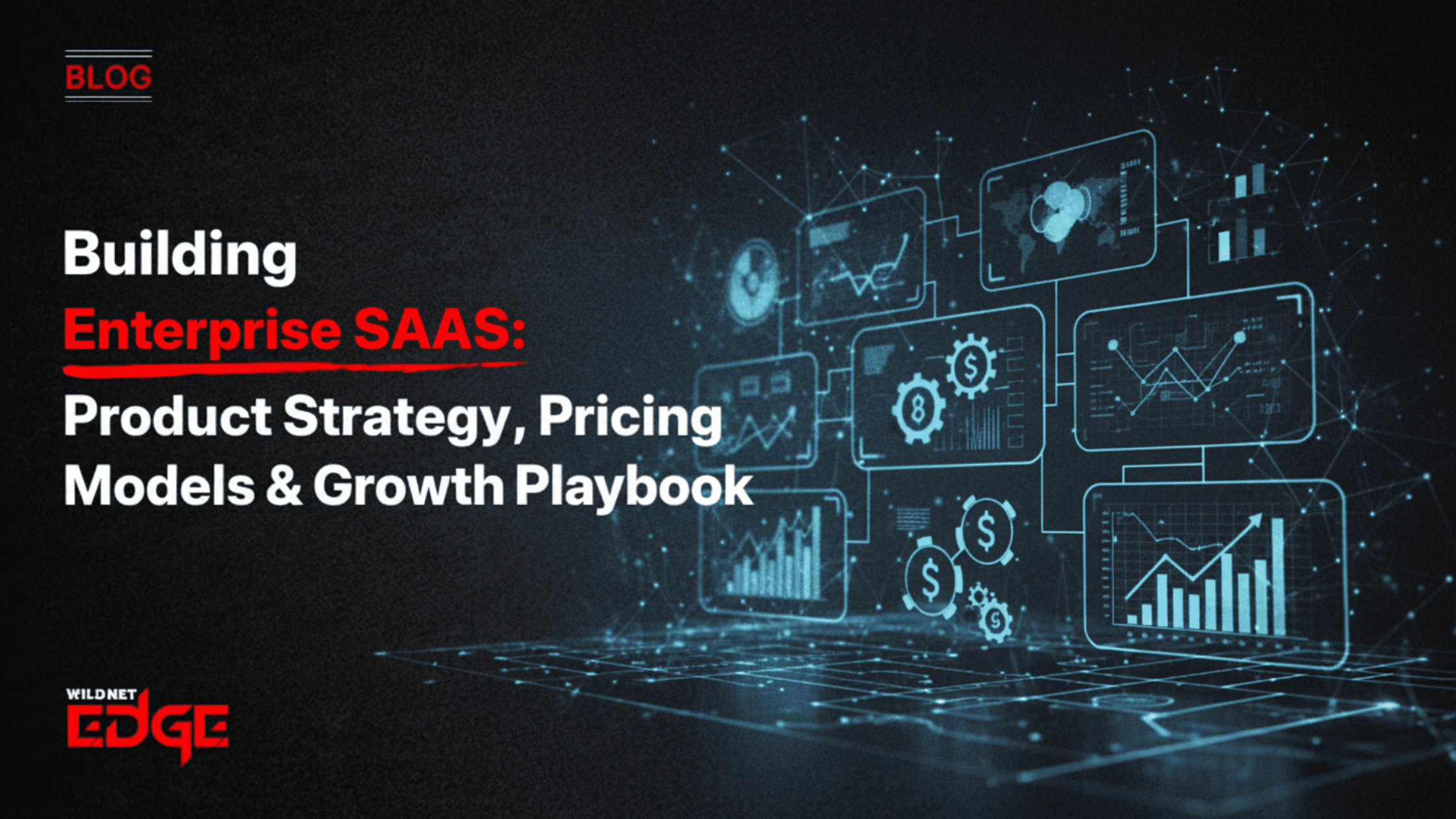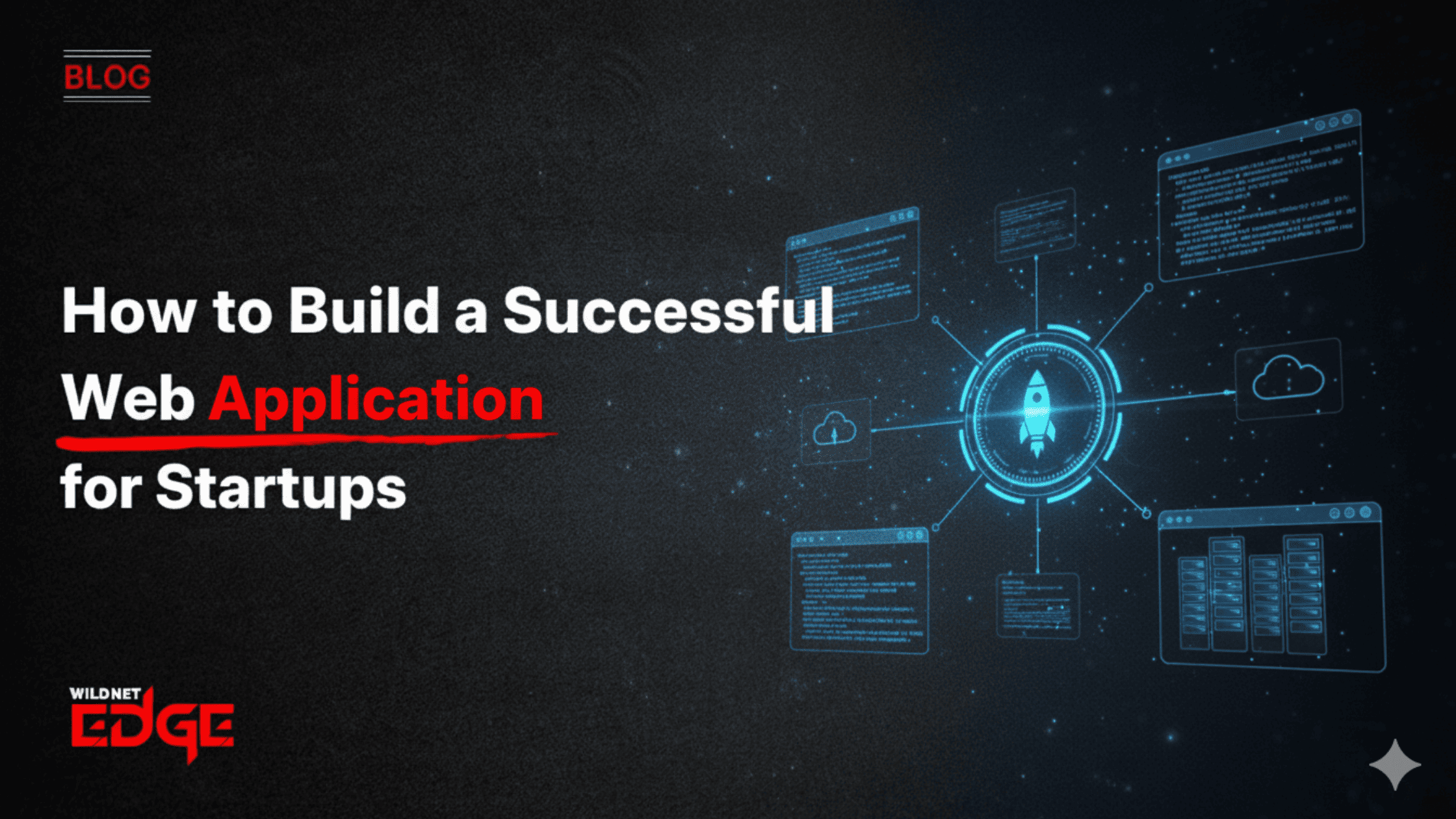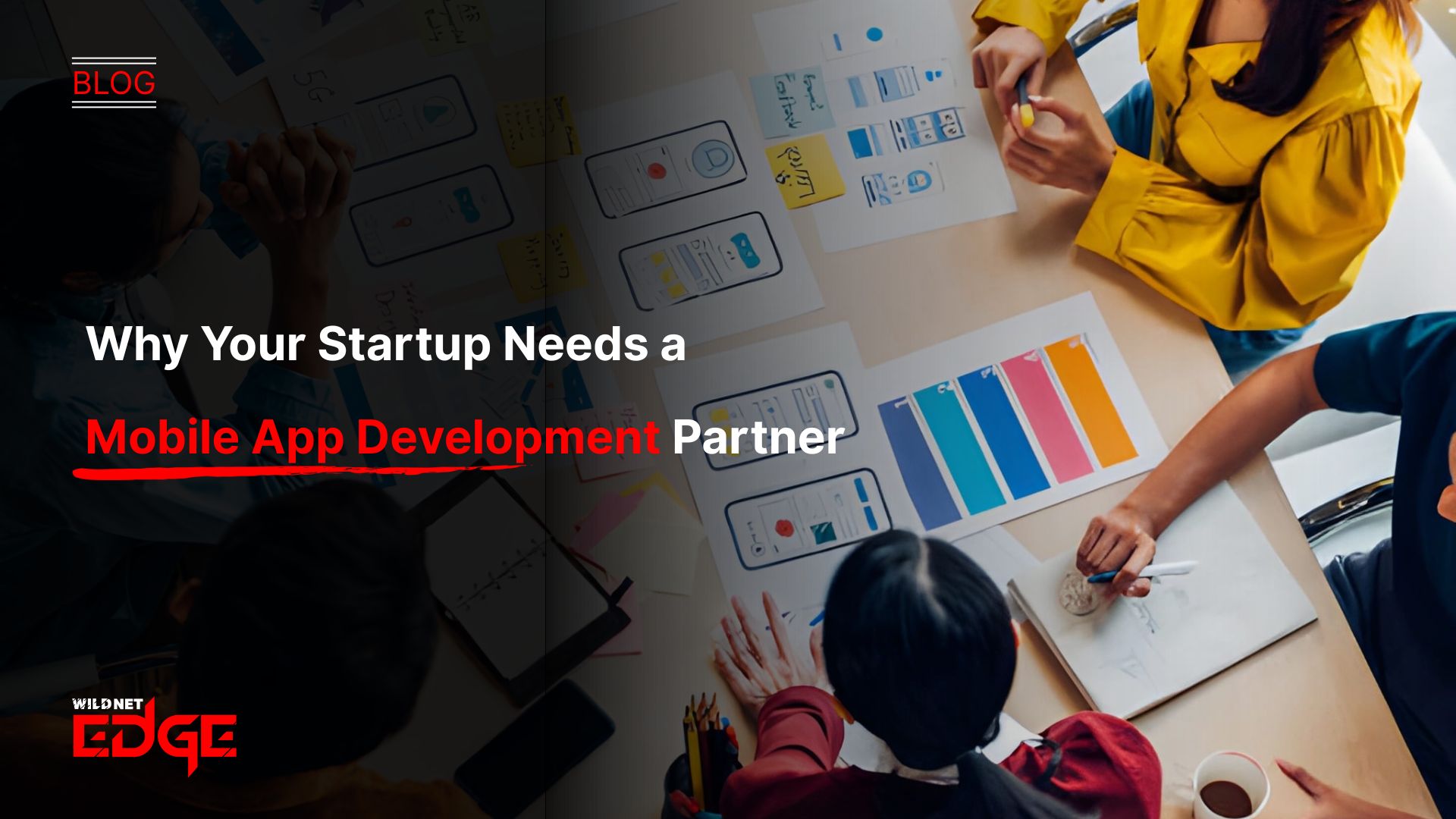TL;DR
This article offers a strategic playbook for building successful enterprise SaaS products. It highlights that true success requires more than code—it needs a clear product vision, market validation, and a scalable, cloud-native architecture. The guide covers key stages like defining an MVP, choosing the right pricing model, and managing the full SaaS lifecycle from acquisition to retention. Ultimately, it presents a customer-focused, structured approach as essential for driving growth and market leadership.
Building a Software-as-a-Service (SaaS) product for the enterprise market is a complex but potentially highly rewarding process. Unlike consumer apps, enterprise SaaS engineering requires a deep understanding of complex business workflows, stringent security and compliance demands, and the ability to integrate seamlessly into existing corporate ecosystems. Success hinges on great technology, a well-defined product strategy, an innovative pricing model, and a scalable growth playbook. This guide outlines the essential components for businesses leveraging SaaS development services to build market-leading platforms.
Phase 1: Defining Your Enterprise SaaS Product Strategy
Before a single line of code is written, a clear strategy must be established. This is the foundation upon which everything else is built.
Identify a High-Value Enterprise Problem
What major, specific nuisance is your corporate customer nearly suffering? In enterprises, providing generic solutions is often not a success. Your tool has to be the best, the fastest, or the least expensive solution. This may often require vast knowledge of the industry.
Deep Dive into Your Ideal Customer Profile (ICP)
Who is the precise person or group within the enterprise that you are selling to? What departments? What titles of the jobs? What are their technological prerequisites, integration necessities, and compliance constraints? Knowing your ICP helps the entire B2B SaaS product lifecycle from feature prioritization to pricing and your go-to-market strategy.
Market Validation and Competitive Analysis
Is the market size satisfactory? Who are the closest competitors, both direct and indirect? What is their power and what are their vulnerabilities? The hard work of market validation, often a key part of initial SaaS development services, that may involve customer discovery interviews is vital to making sure that you are not creating something that enterprises will not pay for.
Minimum Viable Product for Enterprise
Even in the enterprise space, launching with an MVP is often the smartest strategy. Define the core feature set that solves the primary pain point for your initial target users. An enterprise MVP must still be robust, secure, and reliable, but it allows for faster market entry and iteration based on early customer feedback. This requires focused planning, often involving experts in full-cycle product design for SaaS and SaaS development services.
Architecting for Scale: Cloud-Native SaaS
Enterprise applications must be scalable and reliable. Designing a cloud-native SaaS architecture from the beginning is essential. This involves using microservices, containers (Docker/Kubernetes), and leveraging cloud provider services for databases, storage, and networking. A scalable foundation, a hallmark of quality SaaS development services, prevents costly re-architecting later.
Phase 2: Choosing the Right SaaS Pricing Model
Pricing is a major factor in the enterprise SaaS engineering models that lead to growth and the bottom line. Pricing models for large-scale software services can be classified into several groups:
- Tiered Pricing: Different pricing levels for different features or usage limits (e.g., Basic, Pro, Enterprise). This is the most common but still needs careful allocation of features.
- Per-User Pricing: A fee charged according to the number of employees using the software. It is easy to comprehend but may discourage large teams from using it.
- Usage-Based Pricing: The fee is based on how much the customer uses (e.g., data processed, API calls made, storage used). It connects the expense immediately to the value but estimating the cost can be awkward.
- Value-Based Pricing: Prices are set according to the perceived or measurable value that the customer receives (e.g., cost reductions realized, sales generated). It often requires a consultative sales process.
Choosing the right model (or a hybrid) depends on your product, your target market, and the value your SaaS development services provide. It often requires experimentation and iteration.
Phase 3: The Enterprise SaaS Growth Playbook
Launching is merely the starting point. Growth that lasts needs to be supported by a multi-faceted approach which includes SaaS lifecycle management as part of the strategy.
- Acquisition: Getting to Enterprise Buyers. It is a well-known fact that enterprise sales processes are usually longer and more complicated than consumer sales. Therefore, some essential tactics are:
- Content Marketing: Producing white papers, case studies, and webinars that are useful and directly related to the pain points faced by your ideal customer profile (ICP).
- Direct Sales: Developing an outbound sales team that is primarily dedicated to consultative selling and building relationships.
- Strategic Partnerships: Working with the technology providers or consulting firms whose services complement yours.
- Free Trials/Freemium (Cautiously): Providing a less-featured version is one of the options, but it requires definite paths to conversion for enterprise-level features.
Activation & Onboarding
Getting new enterprise users set up and realizing value quickly is crucial. This requires:
- Smooth User Onboarding: Guided tutorials, checklists, and in-app assistance.
- Dedicated Customer Success: Providing hands-on support during the initial implementation phase. Effective onboarding, a feature of comprehensive SaaS development services, often relies on robust enterprise integration solutions.
Retention: Keeping Enterprise Clients Engaged
Churn is the enemy of SaaS profitability. Retention strategies include:
- Proactive Customer Success Management: Regularly checking in, providing strategic advice, and ensuring clients are achieving their desired outcomes.
- Continuous Product Improvement: Regularly releasing valuable new features and enhancements based on feedback.
- Building a Community: Creating user groups or forums where clients can share best practices.
Our Enterprise SaaS Development in Action: Case Studies
Case Study 1: A Niche B2B Workflow Automation Platform
- The Challenge: A startup identified a highly manual, industry-specific workflow ripe for automation but needed the technical expertise to build a robust, multi-tenant SaaS platform.
- Our Solution: We provided end-to-end SaaS development services. Our process included deep domain research, building a scalable cloud-native SaaS architecture on AWS using microservices, and developing an intuitive user interface tailored to the industry’s specific terminology and needs.
- The Result: The platform launched successfully and quickly gained traction, becoming the leading solution in its niche. The scalable architecture handled rapid user growth, and the focus on the specific industry workflow provided a strong competitive advantage.
Case Study 2: Modernizing a Legacy Enterprise System to SaaS
- The Challenge: A large corporation had a critical, decades-old internal software system that was difficult to maintain and couldn’t support modern workflows or remote access. They wanted to rebuild it as a private, internal SaaS application.
- Our Solution: Our team provided custom enterprise SaaS engineering. We carefully analyzed the legacy system’s functionality, designed a modern cloud-based architecture, and rebuilt the application using .NET Core and Angular, deploying it via a robust cloud automation & deployment pipeline.
- The Result: The new internal SaaS platform significantly improved employee productivity and accessibility. The modern architecture reduced maintenance costs by 40% and provided a flexible foundation for adding future capabilities easily.
Our Technology Stack for Enterprise SaaS
As part of our SaaS development services, we leverage robust, scalable, and secure technologies.
- Backend: .NET, Java, Python, Node.js, Go
- Frontend: Angular, React, Vue.js
- Cloud Platforms: Microsoft Azure, AWS, Google Cloud
- Databases: PostgreSQL, Microsoft SQL Server, MongoDB Atlas, Amazon Aurora
- DevOps & Automation: Kubernetes, Terraform, Azure DevOps, Jenkins
Conclusion
The successful creation of B2B SaaS platforms demands a meticulous method which incorporates a thorough market comprehension and high-skilled technical execution. Determining a proper product strategy, a critiqued pricing model, and a dedicated emphasis on customer triumph are some of the important factors in SaaS life cycle management. It is a long and complicated way, but it is worth the trouble since the rewards are very high for the enterprise SaaS engineering solutions creation.
Ready to build the next market-leading SaaS platform? At Wildnet Edge, our AI-first approach to SaaS development services ensures we build intelligent, data-driven applications. We are your expert partner in transforming your vision into a scalable, secure, and successful SaaS business, offering everything from initial concept work to complete custom enterprise SaaS engineering.
FAQs
Enterprise SaaS engineering typically involves higher levels of security, compliance certifications (like SOC 2), scalability to handle thousands of users, complex permission structures, dedicated support, and robust integration capabilities with other enterprise systems (ERPs, CRMs).
While an enterprise MVP needs to be more polished, secure, and feature-rich than a consumer MVP, the principle remains crucial. It allows you to gain early feedback from key design partners within large organizations and validate your core value proposition before a full-scale rollout.
Enterprises often prefer predictable pricing. While usage-based can work, tiered pricing (with an “Enterprise” tier offering premium features, support, and SLAs) or value-based pricing tied to specific business outcomes are often favored. Avoid strict per-user pricing if it discourages widespread adoption within the client’s organization.
A cloud-native SaaS architecture (using microservices, containers, serverless components) is designed specifically to leverage the cloud’s benefits: automatic scaling, high availability, resilience, and efficient resource utilization. This results in a more performant, reliable, and cost-effective application compared to older architectures simply hosted in the cloud.
Integrations are often absolutely critical. Enterprises rely on a complex ecosystem of existing software. Your SaaS product must seamlessly connect and share data with their core systems (like Salesforce, SAP, Workday, etc.) to fit into their established workflows and provide maximum value.
Effective CSM for B2B SaaS platforms is proactive, not reactive. It involves deeply understanding the client’s business goals, providing strategic guidance on using the software to achieve those goals, monitoring usage to identify potential issues early, and building strong relationships with key stakeholders.
Significant ongoing investment is required for success. This includes continuous development of new features to stay competitive, regular maintenance and security updates, scaling infrastructure as the user base grows, and investing in customer success and support teams. SaaS lifecycle management is an ongoing process.

Nitin Agarwal is a veteran in custom software development. He is fascinated by how software can turn ideas into real-world solutions. With extensive experience designing scalable and efficient systems, he focuses on creating software that delivers tangible results. Nitin enjoys exploring emerging technologies, taking on challenging projects, and mentoring teams to bring ideas to life. He believes that good software is not just about code; it’s about understanding problems and creating value for users. For him, great software combines thoughtful design, clever engineering, and a clear understanding of the problems it’s meant to solve.
 sales@wildnetedge.com
sales@wildnetedge.com +1 (212) 901 8616
+1 (212) 901 8616 +1 (437) 225-7733
+1 (437) 225-7733































